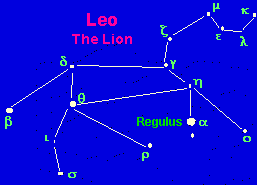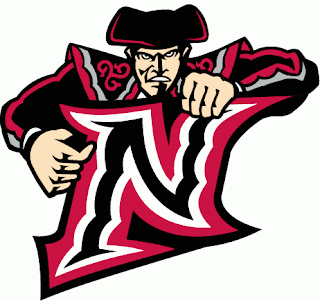Mr. Gantt’s Earth
Science Lab
Weekly Lab Lessons
and Homework
5th Grade
1st Lab Session Week
Earth Science Vocabulary Pre-Test
Concept: The Solar System
Homework: Solar System
Crossword Puzzle and Parent Letter signed
Class Reading: FOSS Science Resources Read pages 145-168. Wonders CA
Content Reader Read pgs 78-81, 84-87 & 90-93.
5-ESS1-1.
Support an argument that differences in the apparent
brightness of the sun compared to other stars is due to their relative
distances from Earth.
ESS1.A:
The Universe and its Stars
•The sun is a star that appears larger and brighter
than other stars because it is closer. Stars range greatly in their distance
from Earth. (5-ESS1-1)
5. The solar system
consists of planets and other bodies that orbit the Sun in predictable paths.
As a basis for understanding this concept:
5a. Students know the Sun, an average star, is the central and
largest body in the solar system and is composed primarily of hydrogen and
helium.
5b. Students know the solar system includes the planet Earth, the
Moon, the Sun, eight other planets and their satellites, and smaller objects,
such as asteroids and comets.
5c. Students know the path of a planet around the Sun is due to
the gravitational attraction between the Sun and the planet.
2nd Lab Session Week
Concept: The Solar System Part
2
5-ESS1-2.
Represent data in graphical displays to reveal
patterns of daily changes in length and direction of shadows, day and night,
and the seasonal appearance of some stars in the night sky.
ESS1.B:
Earth and the Solar System
•The orbits of Earth around the sun and of the moon
around Earth, together with the rotation of Earth about an axis between its
North and South poles, cause observable patterns. These include day and night;
daily changes in the length and direction of shadows; and different positions
of the sun, moon, and stars at different times of the day, month, and year.
(5-ESS1-2)
3rd Lab Session Week
1st quiz on the Solar System
Concept: Water Vapor
Class Reading: FOSS Science
Resources Read pages 182-196. Wonders CA Content Reader Read pgs 54-55.
In classroom experiment: Surface Area page
187-188
3. Water on Earth
moves between the oceans and land through the processes of evaporation and
condensation. As a basis for understanding this concept:
3b. Students know
when liquid water evaporates, it turns into water vapor in the air and can
reappear as a liquid when cooled or as a solid if cooled below the freezing
point of water.
6. Scientific
progress is made by asking meaningful questions and conducting careful
investigations. As a basis for understanding this concept and addressing the
content in the other three strands, students should develop their own questions
and perform investigations. Students will:
6c. Plan and conduct
a simple investigation based on a student-developed question and write
instructions others can follow to carry out the procedure.
6g. Record data by
using appropriate graphic representations (including charts, graphs, and
labeled
Concept: Local Water.
Class Reading: Wonders CA Content
Reader Read pgs 60-61.
3e. Students know the origin of the water used by their local
communities.
4th Lab Session Week
Concept: Water Cycle
Homework: Water Cycle worksheet
Class Reading: FOSS Science
Resources Read pages 219-226. Wonders CA Content Reader Reread pgs 54-55.
5-ESS2-2.
Describe and graph the amounts and percentages of
water and fresh water in various reservoirs to provide evidence about the
distribution of water on Earth.
ESS2.C:
The Roles of Water in Earth’s Surface Processes
§Nearly all of Earth’s available water is in the ocean.
Most fresh water is in glaciers or underground; only a tiny fraction is in
streams, lakes, wetlands, and the atmosphere. (5-ESS2-2)
3a. Students know most of Earth’s water is present as salt water
in the oceans, which cover most of Earth’s surface.
3b. Students know when liquid water evaporates, it turns into
water vapor in the air and can reappear as a liquid when cooled or as a solid
if cooled below the freezing point of water.
3c. Students know water vapor in the air moves from one place to
another and can form fog or clouds, which are tiny droplets of water or ice,
and can fall to Earth as rain, hail, sleet, or snow.
3d. Students know that the amount of fresh water located in
rivers, lakes, underground sources, and glaciers is limited and that its
availability can be extended by recycling and decreasing the use of water.
5th Lab Session Week
Concept: Severe Weather
Class Reading: FOSS Science
Resources Read pages 227-235. Wonders CA Content Reader Read pgs 56-57, 62-63
& 68-69.
4c. Students know the causes and effects of different types of
severe weather.
6th Lab Session Week
Concept: Forecasting Weather
Homework: Weather worksheet
Class Reading: FOSS Science
Resources Read pages 236-250. Wonders CA Content Reader Read pgs 72-73.
4a. Students know the influence that the ocean has on the weather
and the role that the water cycle plays in weather patterns.
4c. Students know how to use weather maps and data to predict
local weather and know that weather forecasts depend on many variables.
4d. Students know that the Earth’s atmosphere exerts a pressure
that decreases with distance above Earth’s surface and that at any point it
exerts this pressure equally in all directions.
7th Lab Session Week
2nd quiz on the Water Cycle and Weather & Earth
Science Vocabulary Post-Test
Concept: How do the geosphere, hydrosphere, atmosphere, and
biosphere influence each other?
5-ESS2-1. Develop a model using an example to describe ways the geosphere,
biosphere, hydrosphere, and/or atmosphere interact.
ESS2.A:
Earth Materials and Systems
•Earth’s major systems are the geosphere (solid and
molten rock, soil, and sediments), the hydrosphere (water and ice), the
atmosphere (air), and the biosphere (living things, including humans). These
systems interact in multiple ways to affect Earth’s surface materials and
processes. The ocean supports a variety of ecosystems and organisms, shapes
landforms, and influences climate. Winds and clouds in the atmosphere interact
with the landforms to determine patterns of weather. (5-ESS2-1)
ESS3.C:
Human Impacts on Earth Systems
•Human activities in agriculture, industry, and
everyday life have had major effects on the land, vegetation, streams, ocean,
air, and even outer space. But individuals and communities are doing things to
help protect Earth’s resources and environments. (5-ESS3-1)









































